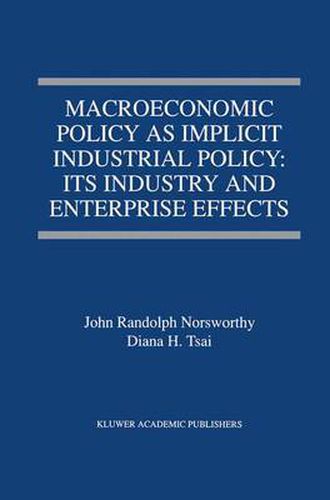Readings Newsletter
Become a Readings Member to make your shopping experience even easier.
Sign in or sign up for free!
You’re not far away from qualifying for FREE standard shipping within Australia
You’ve qualified for FREE standard shipping within Australia
The cart is loading…






This title is printed to order. This book may have been self-published. If so, we cannot guarantee the quality of the content. In the main most books will have gone through the editing process however some may not. We therefore suggest that you be aware of this before ordering this book. If in doubt check either the author or publisher’s details as we are unable to accept any returns unless they are faulty. Please contact us if you have any questions.
Whether they should or not, few economists do in fact refrain from making pronouncements on public policy, although the state of the economy (both here and elsewhere) suggests that either the advice given is bad or, if good, that it is ignored … I happen to think that we are appallingly ignorant about many aspects of the working of the economic system – the economics of the firm and industry. Ronald H Coase, Economists and Public Policy In this volume we attempt to address an element of Coase’s concern by linking the empirical economics of the fInn and industry more closely to macroeconomic policies, and to demonstrate how to assess some of the effects of those policies. The scope of our study ranges from a structural macroeconomic model of the United States, from which macroeconomic effects are propagated to detailed structural models of SIC four digit industries. The rationale for our approach is very much in the spirit of various integrated macroeconomic/industry models constructed by Dale Jorgenson, working with various collaborators. Our approach is also consistent with, and motivated by, Lawrence Klein’s agenda of modeling explicitly and structurally the macro and sectoral elements in the national economy. We also examine the effects of the macroeconomic policies of different countries on the enterprise. In only one case, our examination of crowding out of private investment by government defIcit fmancing, is the linkage among sectors implicit.
$9.00 standard shipping within Australia
FREE standard shipping within Australia for orders over $100.00
Express & International shipping calculated at checkout
This title is printed to order. This book may have been self-published. If so, we cannot guarantee the quality of the content. In the main most books will have gone through the editing process however some may not. We therefore suggest that you be aware of this before ordering this book. If in doubt check either the author or publisher’s details as we are unable to accept any returns unless they are faulty. Please contact us if you have any questions.
Whether they should or not, few economists do in fact refrain from making pronouncements on public policy, although the state of the economy (both here and elsewhere) suggests that either the advice given is bad or, if good, that it is ignored … I happen to think that we are appallingly ignorant about many aspects of the working of the economic system – the economics of the firm and industry. Ronald H Coase, Economists and Public Policy In this volume we attempt to address an element of Coase’s concern by linking the empirical economics of the fInn and industry more closely to macroeconomic policies, and to demonstrate how to assess some of the effects of those policies. The scope of our study ranges from a structural macroeconomic model of the United States, from which macroeconomic effects are propagated to detailed structural models of SIC four digit industries. The rationale for our approach is very much in the spirit of various integrated macroeconomic/industry models constructed by Dale Jorgenson, working with various collaborators. Our approach is also consistent with, and motivated by, Lawrence Klein’s agenda of modeling explicitly and structurally the macro and sectoral elements in the national economy. We also examine the effects of the macroeconomic policies of different countries on the enterprise. In only one case, our examination of crowding out of private investment by government defIcit fmancing, is the linkage among sectors implicit.